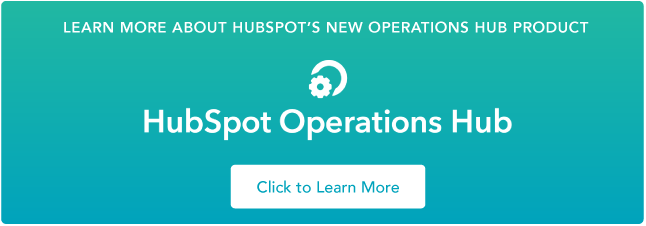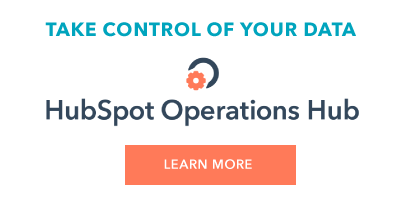Every business has data. It can be data about your customers, their purchases, or engagement with your product — no matter the type of business, there's going to be data. And as your business scales, your data will grow too. The ability to manage thousands, if not millions, of data points is critical to any company's success.
Even though data is so common and abundant, you can't improvise with it. A data strategy doesn't just happen by itself — you need to work at it and constantly optimize it. Every business, no matter how large or small, needs a data strategy.
Let's dive into some general concepts to learn and aspects to consider before creating a data strategy.
What is Data Strategy?
Data strategy creates a comprehensive and holistic vision of the data within a business. It brings together the key components of data lifecycle management — collection, storage, maintenance, usage, and cleaning — to create an integrated approach across all apps and teams. This helps to maintain accurate, consistent, and relevant data everywhere.
One sub-section of a data strategy is a data governance strategy, which helps an organization to safeguard its data from inconsistency and inaccuracy.
When Do You Need a Data Strategy?
You should create a data strategy as early as possible and revisit that strategy periodically, especially when you add new applications to your business. If you don't have anything in place yet, now is a better time than ever.
With a clear strategy for data management, you can optimize performance throughout your organization. This is because a data strategy helps to maintain:
- Reliable and accurate data
- Ethical data use that adheres to data protection regulations
- One version of your data that can be synced between all apps
- Actionable and relevant reporting to influence business decisions
Data strategy helps every department to carry out their work effectively and with a transparent view of performance, enabling team leaders to make quick decisions to harness opportunities and overcome risks.
Learn More About HubSpot's Operations Hub Software
The Components of a Data Strategy
There are several key elements of any data strategy. When you have a plan for them individually and collectively, you put your business in the best position to manage and optimize your data at every stage of its lifecycle.
You can use these key components as the framework for your data strategy template:
- Data collection
- Data storage
- Data maintenance
- Data integration
- Data purging
- Data usage and reporting
How you collect your data determines everything that follows, which makes it an important component to get right early on.
As the data lifecycle progresses, it's important to guarantee secure storage and maintenance to uphold data integrity and a strong data governance strategy.
It's also a good practice to integrate data between your apps to create a single source of truth between them, so you're not left questioning which version is the correct one.
Once data is no longer valuable or accurate, it should usually be purged, or cleaned. This stops it from affecting the overall quality of your database or corrupting other data.
By optimizing these components, you are in the best position to put your data to work, such as by implementing data reporting.
Key Questions to Answer in Your Data Strategy
A data strategy should make it straightforward for your business to collect, maintain, and use high-quality data by design. As your operations tick along, you can trust that your processes are taking the best care of your data.
It can take a bit of time to create a data strategy, but it simplifies everything that follows and saves you time and money in the long-term. Regardless of your industry and business size, it's worth the effort and occasional maintenance.
Creating a data strategy essentially consists of answering the following questions, which most businesses can create a basic framework for in a short document.
1. Which data is valuable to your organization?
A data strategy starts by identifying the data that is useful for your organization. This determines what's worth collecting in your lead generation forms and other data collection channels.
You can start by looking at these general data types and drill into more detail for each one:
- Lead data
- Customer data
- Website data
- Social media data
- Product data
- Market data
2. How will you collect high-quality data?
Even if you know the data you want to collect, you need to ensure it's high-quality. Otherwise, it can be more unhelpful than valuable. Quality data is accurate, complete, relevant, consistent, accessible, and timely. It results in quality information that can contribute to data-driven decisions.
3. How will you store and maintain data securely?
The steps an organization takes to secure, analyze, and manage its customer data comes under its data governance strategy, which can be one part of your overall data strategy. One key factor is choosing an adequate data storage solution.
4. How will you maintain a single source of truth in your data?
Making sure your data is aligned between apps requires data synchronization. This connects the dots between your apps — from your CRM to your automation software and accounting system — and communicates any data changes between them. With real-time updates, you know you're always looking at the latest data. You also don't have to worry about manual updates.
5. How will you remove low-quality or outdated data?
Low-quality data includes incorrect, expired, or otherwise corrupted data. To keep it out of your database, in your strategy you can determine:
- What bad data looks like to your organization
- How you can identify it (ideally with automated processes)
- How and when you will remove it
For instance, you might create an automated list in your CRM that's populated with contacts with bounced email addresses. Every month, you can review this list and purge the contacts you're sure you don't need.
As part of your data purging plan, it's also important to decide how you will deal with communication opt-outs and the process for removing a contact's data if they request this.
6. How will you adhere to data protection regulations?
Data protection is relevant for every stage of the data lifecycle. For your organization to be compliant, it should be secure by design. You can set off in the right direction by following the other key steps on this list. GDPR compliance software and reading up on best practices can also help you tick more boxes.
7. How will you use your data?
Organizations store data for one common reason: to turn it into information. Data becomes information when it is processed, interpreted, and organized. You can then use it to populate insightful reporting dashboards, inform business decisions, and deliver optimized customer experiences.
Now's the Time to Create Your Data Strategy
It's never too early or late to start implementing stronger data practices. Even if it's just a few sides of A4 paper to begin with, start getting clear on how your organization collects, maintains, and uses data. Then, set the processes in motion for this to happen in an optimized way by default.
Originally published Dec 17, 2020 4:33:48 PM, updated April 21 2021

